Collaborating 🕸️
Radiating series
at NS16
2025
08.06.2025
Radiating with/from Leonie Gossens
Herinneringen Planten / Planting Memories
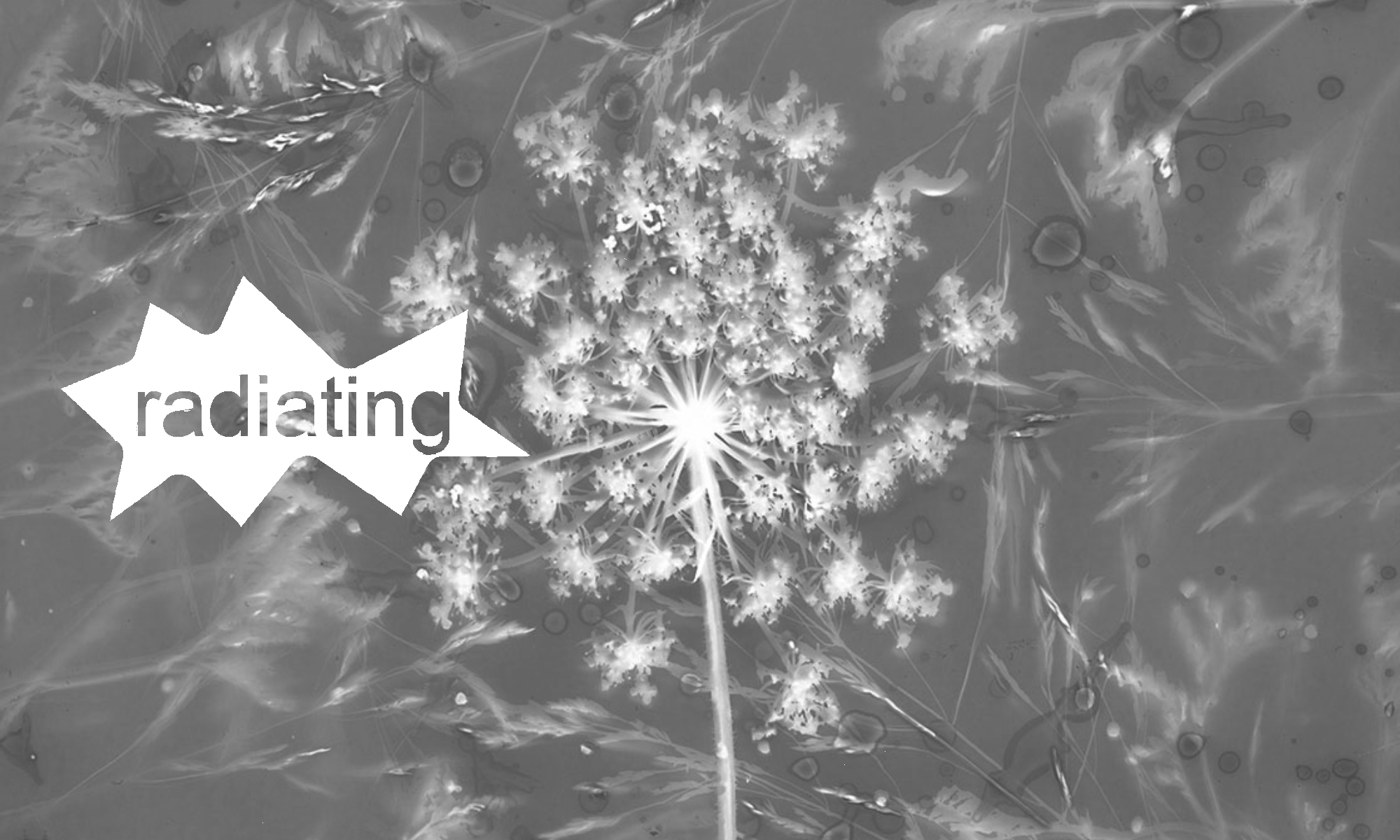
02.03.2025
Raditaing with/from Téra Pechmannová
Parallel brew
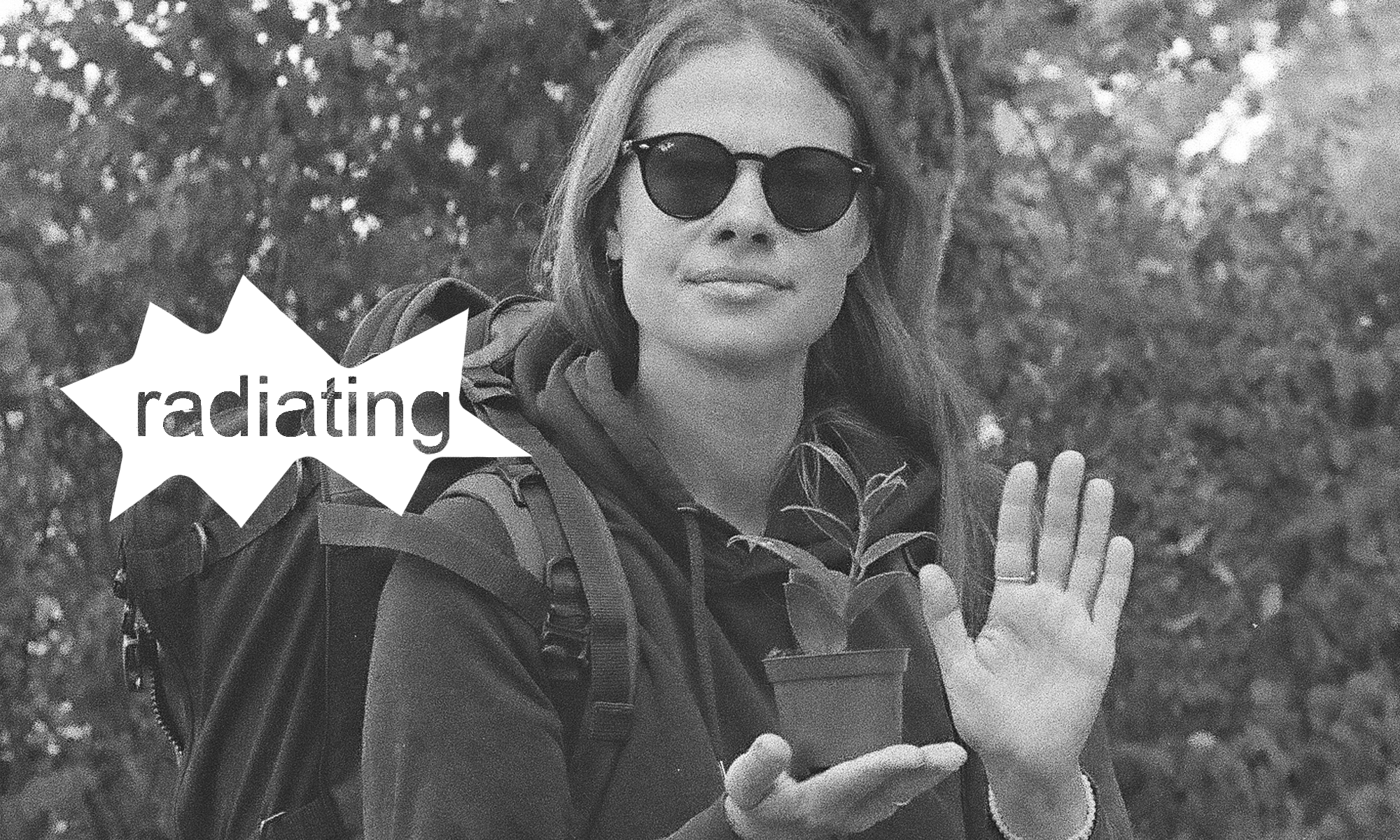
Co-curating and Reading folds
at SEA Foundation
2021 - 2024
31.10.2024
with Janneke van der Putten, reading Sounding the margins by Pauline Oliveros
“Just as we can look out into the universe far beyond our seeing eyes with the aid of telescopes and into the micro world with microscopes we can listen far beyond and below the human range of hearing with microphones. We are of course protected from constantly hearing and perceiving the sounds of our body such as the sound of cells dividing, of blood flowing or neurons firing etc. However we can tune into these sounds voluntarily with the aid of technology” (p.23)
26.09.2024
with Adele Dipasquale, reading For More than One Voice: Toward a Philosophy of Vocal Expression by Adriana Cavarero
“The voice indeed does not mask, but rather unmasks the speech that masks it. Speech can play tricks. The voice, whatever it says, communicates the uniqueness of the one who emits it, and can be recognized by those to whom one speaks. But it is not being recognisable that renders the voice unique. On the contrary, every voice is unique, and because it is unique, once it is known it can be recognised.” (p. 24 - 25)
29.08.2024
with Nadine Ghandour & Agata Sznurkowska, reading Take Care by Jeff Dolven and The Ambivalents by Sally O’Reilly
“You could care so much about the animals at Braintree, or at the labs that Braintree services, that you forget to care about the workers. The animals, whatever they are, are not employees; they are not compensated, sign no contracts, have no health care plans. They do not labor. There is labor in the lab, though, and it leaves its traces in the catalog, first in all the talk about safety. The animals pose risks, hence the metal mesh glove, but so does the equipment, which is sharpened to open or puncture the animals but may inadvertently do the same to the staff. Be careful! “ (Dolve, p.57)
30.05.2024
with Tom Viaene, Arnout & Michiel De Cleene, reading Forensis – The Architecture of Public Truth by Eyal Weizman
“From the perspective of forensics, architecture is an analytic and pro- bative mode for inquiring into the present through its spatial materializa- tion. Forensics turns space into evidence, but also into the medium in which different types of evidence come together and into relation with each other. Forensic architecture thus intensifies the investigative capacity of architecture and turns it into a mode of public address, a way of articulating political claims, and forces architectural researchers to face cross-examination in the most antagonistic of forums.” (p. 19)
25.04.2024
with Angela Serino & Maja Bekan, reading Leaning Out, Caught in the Fall: Interdependency and Ethics in Cavarero by Judith Butler
“I want to ask whether the inclining figure shadows forth in the upright figure such that the two are not radically distinct and never fully oppositional. It is not just that the upright figure can fall, and has surely fallen, started out on the ground, and that the inclining and caring figure seeks to catch the fall, but she sometimes finds herself falling as well. In fact, both figures of embodiment are confronted with problems of gravity and balance that require infrastructural support (if not public services).“ (p.49-50)
28.03.2024
with Roy Voragen & Isolde Venrooy, reading excerpts from the publications from Southeast Asia as carried by the Curated Suitcase
“Mother’s cooking is the benchmark of how the family set their expectations on food. By anchoring her taste buds to her long cooking experience, my mother has based her judgment about any kind of cooking produced by the other food providers.” (From An unfinished story of the source of good food by Nuraini Juliastuti)
22.02.2024
with Lotta Petronella ft. Oksasenkatu 11, reading Experiments in Imagining Otherwise by Lola Olufemi; a poem called Rant by Diane di Prima; and the tarot card number 12 and 20 – the hanged and judgment.
“when she is dreaming, she is dreaming of some place where people do not suffocate to death in the back of a lorry, or where a little black girl does not die from air pollution without ever seeing the other half of the city, when they are dreaming, they are dreaming of mastering vulnerability so they could stop distancing themselves from everything and everyone,...” (Olufemi, p.61)
25.01.2024
with Eva Ooijen, reading Women & Power: A Manifesto by Mary Beard
“Of course, we don’t talk in those bald terms now. Or not quite. For many aspects of this traditional package of views about theunsuitabilityofwomen forpublicspeak- ing in general - a package going back in its essentials over two millennia - still under- lie some of our own assumptions about, and awkwardness with, the female voice in public. “ (p.29)
26.10.2023
with Barbora Trnková ft. Vašulka Kitchen Brno, reading Uses of the Erotic: Erotic as Power by Audre Lorde
“As women, we have come to distrust that power which rises from our deepest and nonrational knowledge. We have been warned against it all our lives by the male world, which values this depth of feeling enough to keep women around in order to exercise it in the service of men, but which fears this same depth too much to examine the possibilities of it within themselves.”
28.09.2023
with Pam Virada, reading Laughing at the Spirits in North Siberia: Is Animism Being Taken too Seriously? by Rane Willerslev
“People are expected to make claims on other people’s possessions, and those who possess more than they can immediately consume or use are expected to give it up without expectation of repayment. This principle of sharing applies to virtually everything, from trade goods, such as cigarettes and fuel, to knowledge about how to hunt, but it applies most forcefully to the distribution of meat: “I eat, you eat. I have nothing, you have nothing, we all share of one pot,” the Yukaghirs say” (available online at E-flux)
22.06.2023
with Golnar Abbasi, reading Women Reflected in Their Own History by anonymous writer L.
“For Zhina, Niloufar, Elaheh, Mahsa, Elmira, and those whose names I haven’t yet uttered.
What follows is an attempt to understand what one intuits about a gap—the gap between watching videos and photographs of the protests and being in the street.” (available online at E-flux)
25.05.2023
with Charlotte Jarvis, reading Baroque technopatriarchy: reproduction by Paul B. Preciado
“Life in the most basic sense, as defined by many different communities of knowledge, is a system that can sustain and reproduce itself.” (available online at Artforum)
30.03.2023
with Doris Hardeman ft. Cas-co Leuven, reading excerpts from Breathing: Chaos and Poetry by Franco ‘Bifo’ Berardi
“Chaos has the potency to make creation possi- ble. Can the collective brain consciously master and attune to the evolution of the collective brain itself?” (p. 50)
“When the illusion of meaning is shared, it is no longer an illusion: it becomes reality. The bridge over the abyss is the dialogue that allows for the sharing of a vision, of an expectation, of an intention. This dialogue is based on refrains of nonattachment, and it eman- cipates us from the fear of not being. Getting freed from the will to live is the condition for being alive at last. The bridge over the abyss of the absence of meaning can take many forms: falling in love, ten- derness, collective creation, hallucination, and movement. These forms give birth to the physical experience of meaning.” (p. 145)
23.02.2023
with Risk Hazekamp reading excerpts from Fires, Fogs, Winds by Elizabeth Povinelli
“Anthropologist Ali Feser has found that no matter the hard evidence of Kodak’s liability, many former employees and their children could not simply kick their habit of associating the astringent signature smell of photographic chemicals with better days, happier moments, more secure futures. The sensory history of chemicals sear into the affects, creating bonds of desire, nostalgia, and mourning for the very toxins now slowly overheating bodies and landscapes.” (p. 26)
“Fire is the element that transforms substances. It brings about new forms, with new memo- ries, desires, and nostalgia. These forms do not abide by the logic of vitality, but man- ifest an affiliation with the errant harms of a grinning geontopower. Now we know that fire is just one effect of oxidation—the loss of one or more electrons when two substances interact—a chemical bonding.” (p. 28)
26.01.2023
with Gladys Zeevaarders reading excerpts from Phenomenology of Perception by Maurice Merleau-Ponty
“I shall therefore give up any attempt to define sensation as pure impression. Rather, to see is to have colours or lights, to hear is to have sounds, to sense (sentir) is to have qualities. To know what sense- experience is, then, is it not enough to have seen a red or to have heard an A? But red and green are not sensations, they are the sensed (sen- sibles), and quality is not an element of consciousness, but a property of the object. Instead of providing a simple means of delimiting sensa- tions, if we consider it in the experience itself which evinces it, the quality is as rich and mysterious as the object, or indeed the whole spectacle, perceived.” (p. 5)
02.12.2021
with Laura Castro reading excerpts from A Moving Border. Alpine Cartographies of Climate Change by Studio Folder
“A boundary is, at its most straightforward, a line that divides. Today we think of a boundary as a line that divides two places, often states. This line can be drawn in different ways - made visible on the landscape through fences, walls, or ditches, or simply by cutting through forest or brush. It might be invisible to a person on the ground on the ground but enforced by a clause in a treaty or other legal agreement. Politics, people, and materials cross such lines all the time, weather with ease or friction. A boundary is, in this definition, a line with nominally zero width.” (p. 51)
18.11.2021
with Sophia Holst reading excerpts from Common Space: The City as Commons by Stavros Stavride
“Space is an active form of social relations, a constituent aspect of social relations and a set of relations itself. Space matters because it is not an inert container of social life but an integral part of its manifestations and its events. Space gives form to encounters because it is a structured system of relations....For common space to remain as common there needs to be a mechanism that continuously processes the contribution of those who are invited to use common space. In other words, common space cannot be fixed in the form of a product (no matter how collectively it was produced) because it keeps on producing those who produce it. The production and uses of common space cannot be separated.” (p. 260)
16.09.2021
with Amy Franceschini reading excerpts from The Politics of Small Gestures: Chances and Challenges for Contemporary Art by Mika Hannula and Devil and Commodity Fetishism in South America by Michael Taussig
“I will argue for a version of contemporary art that is a part of our everyday expe- rience. I want to see art as a partner in crime. A crime of passion, that is: participating in the processes of shaping and making the content of concepts and symbols. A web of processes that aims at generating sustainable conditions for knowledge production. It is a version of involvement in contemporary art that focuses on what it has to say to us about our lives. It is not high up there somewhere, and neither is it down there anywhere. It is near, within sight, so close it tickles our imaginations.” (Hannula, p. 6)
08.07.2021
with Sheng-Wen Lo reading story The Snake by John Steinbeck
“The snakes were bunched and resting in the corners of the cage, but every head was clear; the dusty eyes seemed to look at nothing, but as the young man leaned over the cage the forgued tongues, black on the ends and pink behind, twittered out and waved slowly up and down. Then the snakes recognized the man and pulled in their tongues.” (p. 49)
17.06.2021
with Katarina Jazbec reading Mimetic Traps: Forests, Images, Worlds by Pedro Neves Marques
“Here, Kopenawa is focusing on myths and cosmogonist stories common across Amerindian South America: the first times, long ago yet in ever-present actualization, when all living forms, whether animal or plant, were human. Accordingly, image-spirits refer not only to the image-double of a given animal but also to humanity in general: a common humanity, visible at the beginning of time and now invisible, because dispersed into the forms taken by the many species-beings of the forest—beings who, each from their own perspective, still see themselves as humans but who cannot see us or any other animals or plants as such.” (p. 28)
“There is no stepping outside oneself, it seemsto me, in Kohn’s example; no illusion of transcendence or transparency. One does not become the other; one becomes something else, something in-between—a form of learning from the interval.” (p. 34)
20.05.2021
with Mari Keski-Korsu reading Hydrofeminism: Or, on Becoming a Body of Water written by Astrida Neimanis
“Even while in constant motion, water is also a planetary archive of meaning and matter. To drink a glass of water is to ingest the ghosts of bodies that haunt that water. When “nature calls” some time later, we return to the cistern and the sea not only our antidepressants, ourchemical estrogens, or our more commonplace excretions, but also the meanings that permeatethose materialities: disposable culture, medicalized problem-solving, ecological disconnect.” (p. 98)
“In acknowledging this corporeally connected aqueous community, distinctions between human and nonhuman start to blur. We live in a watery commons, where the human infant drinks the mother, the mother ingests the reservoir, the reservoir is replenished by the storm, the storm absorbs the ocean, the ocean sustains the fish, the fish are consumed by the whale. The bequeathing of our water to an other is necessary for the custodianship of this commons. But when and how does gift become theft, and sustainability usurpation?” (p. 105)
2020 - 2024
12.04. - 04.07.2024
Exhibition glacier mother iceberg child in 4 iterations | Sanne Kabalt
 (image credit: Sanne Kabalt, heading image of the exhibition, 2023)
(image credit: Sanne Kabalt, heading image of the exhibition, 2023)October 2023
Studio encounter with Irish artist Marie Farrington
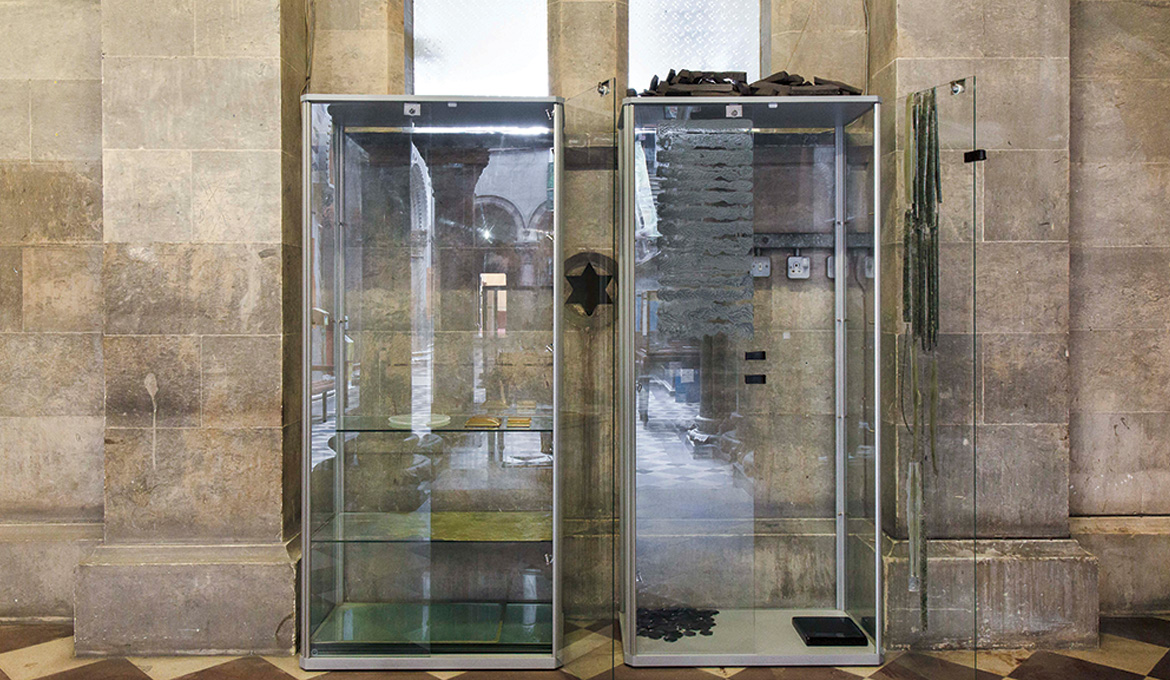 (image credit: Marie Farrington, installation view from her exhibition Glossaries for Forwardness, Museum Building, Trinity College Dublin)
(image credit: Marie Farrington, installation view from her exhibition Glossaries for Forwardness, Museum Building, Trinity College Dublin)
13.05. - 24.06.2023
Exhibition in WARP | Mohammad Abou Chair
 (image credit: Mohammad Abou Chair, The Story of an Olive Tree in a Whirlpool, 2022)
(image credit: Mohammad Abou Chair, The Story of an Olive Tree in a Whirlpool, 2022)25.03. - 07.05.2023
Group exhibition ‘Over and over and over’ we become | Kristine White, Alberto Maggini & Cecilia Casabona
 (image credit: Kristine White, Three Ecologies, 2023)
(image credit: Kristine White, Three Ecologies, 2023)04.02. - 11.03.2023
Exhibition in WARP | Jamie Kane
 (image credit: Jamie Kane, Carriers, 2023)
(image credit: Jamie Kane, Carriers, 2023)03.12.2022 - 29.01.2023
Exhibition in WARP | Steffie de Gaetano
 (image credit: Steffie de Gaetano, Permeance, 2020 - 2022)
(image credit: Steffie de Gaetano, Permeance, 2020 - 2022)28.10. - 18.11.2022
Exhibition in WARP | Pauline Berger
 (image credit: Pauline Berger, carry me, weight (atlas), 2022)
(image credit: Pauline Berger, carry me, weight (atlas), 2022)16.10. - 15.11.2020
Exhibition in WARP | Peng Zhang in WARP
 (image credit: Peng Zhang, Villagers in Memory, 2019)
(image credit: Peng Zhang, Villagers in Memory, 2019)05.06. - 05.07.2020
Exhibition in WARP | Sabine de Graaf
 (image credit: studio encounter with Sabine de Graaf, 2020)
(image credit: studio encounter with Sabine de Graaf, 2020)Other collaborations
with Frankie Clark
2012 - 2016
2016 The Last Supper
dinner on London Bridge cooked from the ‘expired’ ingredients donnated from the local shops or picked up from the dumpsters
2014 One Night Home
intallation in public space in protest with the law criminalising the rough sleeping in certain boroughs of London
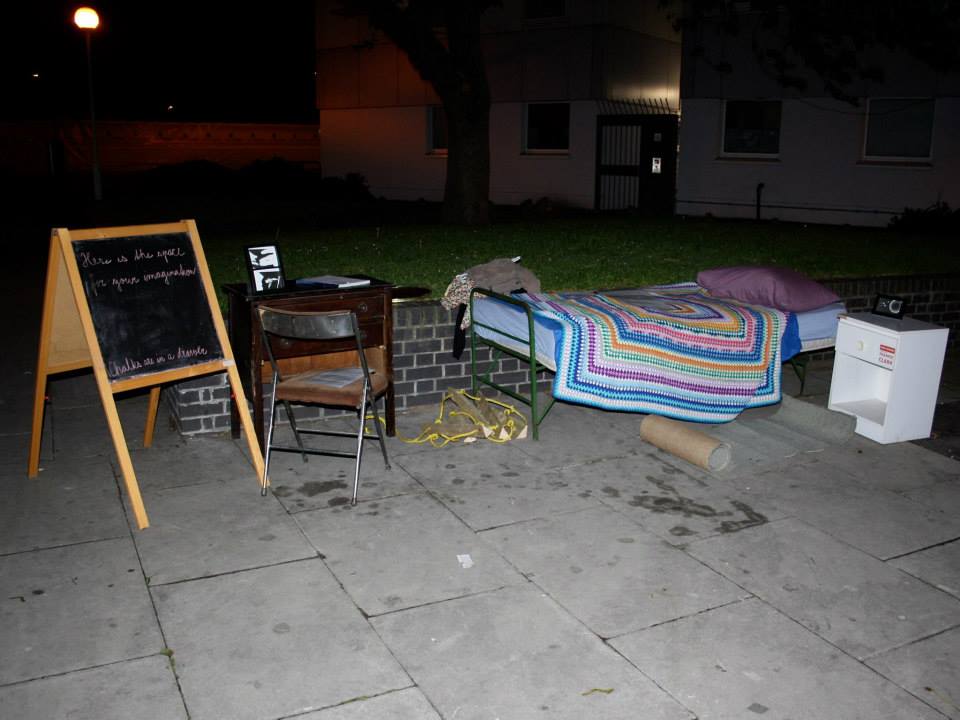
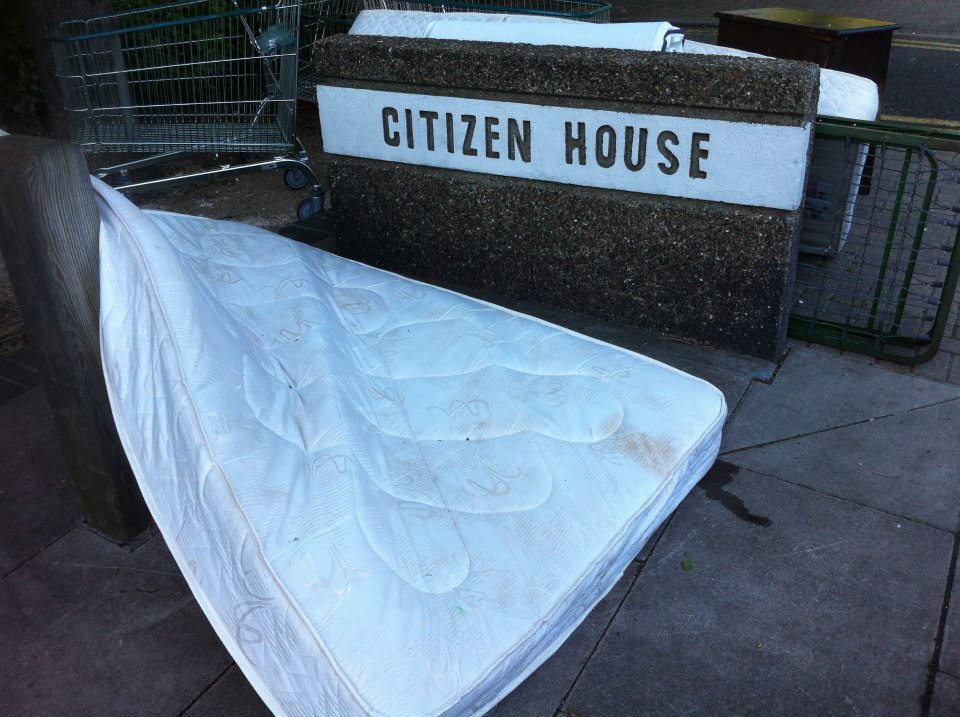
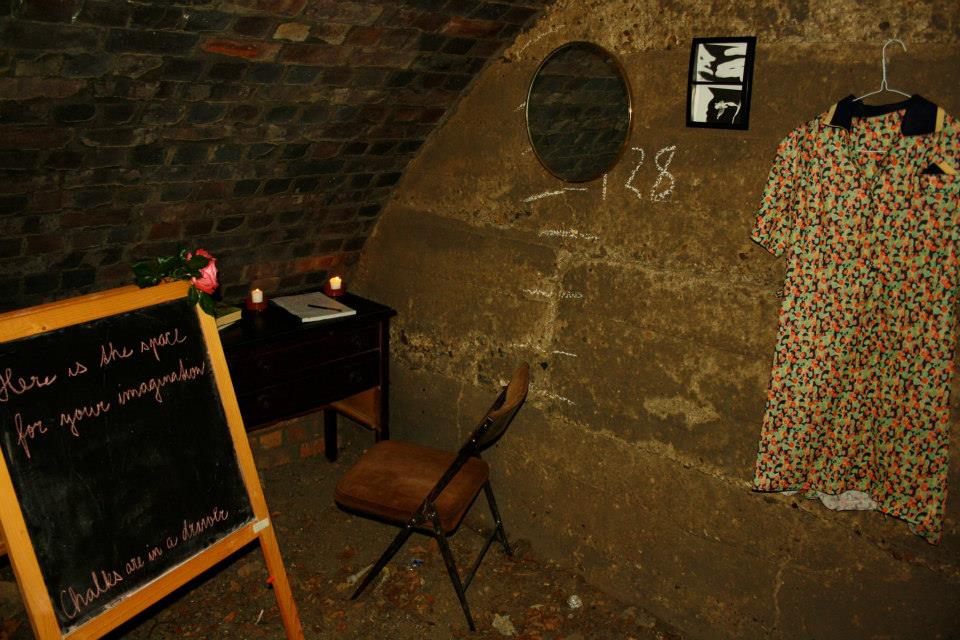
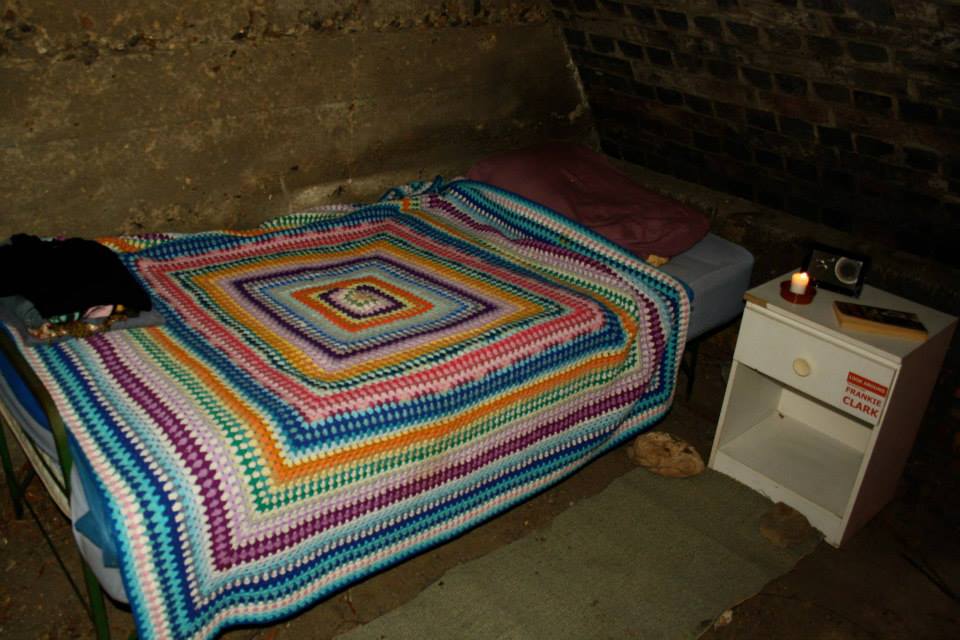

Independent cinema
Studio Karel
2012 - 2013
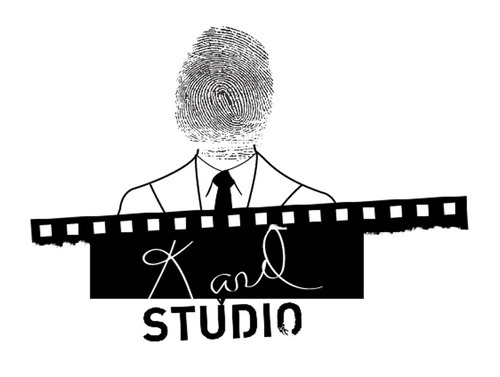 logo by Eva Šlosarová
logo by Eva ŠlosarováStudio Karel is devoted to the memory of Czech-born British filmmaker, Karel Reisz, who spent his childhood in the house where cinema and arts centre Stara arena are located.
„Studio Karel“ was founded by the distribution company Artcam, civic organization Filmoteka Ostrava which is the organizer of the International Cinematographers Film Festival and by Stara arena, the arts centre with a long cultural tradition.
 July and August 2012 posters by Markéta Hajduková
July and August 2012 posters by Markéta Hajduková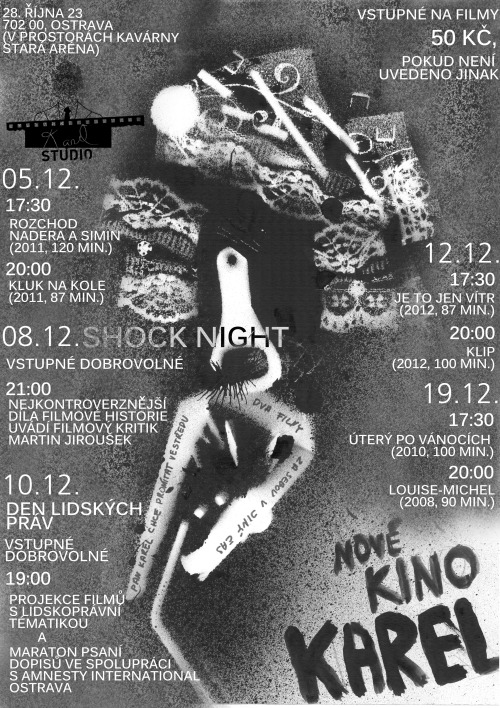 December 2012 poster by Martin Cihlář
December 2012 poster by Martin Cihlář  January 2013 poster by Honza Vrabček
January 2013 poster by Honza Vrabček 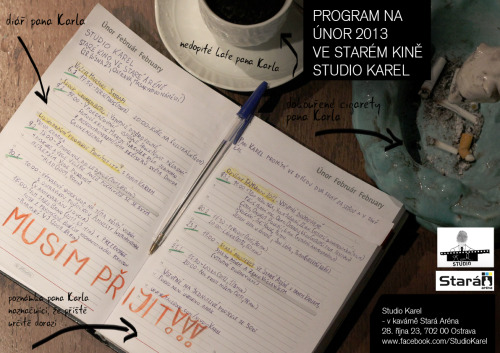 February 2013 poster by Nicola Szabo
February 2013 poster by Nicola Szabo  March 2012 poster by Eva Jašková
March 2012 poster by Eva Jašková  April 2012 poster by Jiří Franek
April 2012 poster by Jiří Franek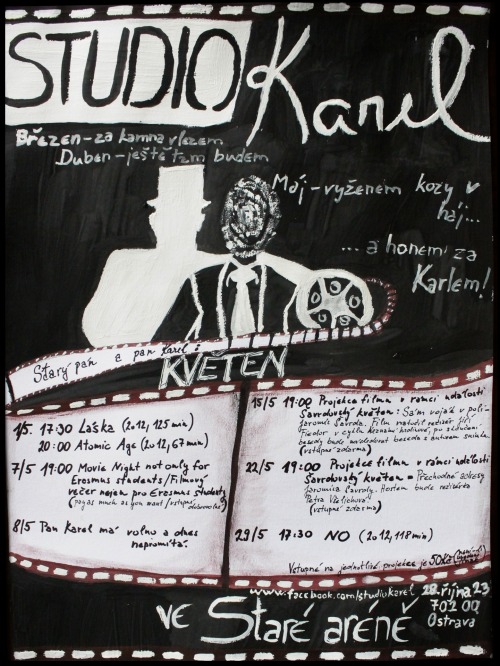
May 2012 poster by Eliška Kučáková
Exhibition concept
in Cooltour
2012
Sillicon Heaven of Ostrava
Under the platform of multidisciplinary contemporary arts centre Cooltour in my hometown, I had the chance to initiate the project called „Silicon Heaven of Ostrava“ focusing on the connection of arts and ecology through the usage of electrical waste.
The name of the project was inspired by the British sitcom Red Dwarf, the episode “Last day”, where the android Kryten was concieved that all of the old electrical machines, robots and even the calculators will come to the silicon heaven.
The aime was to make a workshop and the exhibition made out for the electrical junk and to present to the public how the diferent kinds of material can be transformed into the art. The official workshop was held at the Faculty of Fine Arts at the University of Ostrava by students of Sculpture, supervised by Jaroslav Koléšek and Jan Šnéberger, and by students of Intermedia studies supervised by Petr Lysáček. The documentary edited and co-directed by Eva Šlosarová was made during the making process (only in Czech).
In October, students entered an electrical waste recycling center and chose up to 1 tonne of waste. Afterwards they were creating their art objects in the studios. The project culminated with an exhibition in the Multidisciplinary Contemporary Arts Centre in the end of November 2012. The part of the event was also screening of the movie Waste Land, music experiment of local music formation Chee Chaak Tips! Crew and intermedia painting by artist Eva Jašková.
Project was held with the support of OKD Foundation and the participation of the non-profit organization Asekol organizing the collection of the electrical waste on the national level. In the section “For Joy” of OKD Foundation the project was awarded as the best project of the year 2012 in the region.
Last but not least, during the whole exhibiting time the project was followed by the supportive events - screening of the movie Garbage Warrior, design workshop from the electrical waste by Vladimir Růžička (WASTED) and the competition for public in making DIY objects from electrical waste.